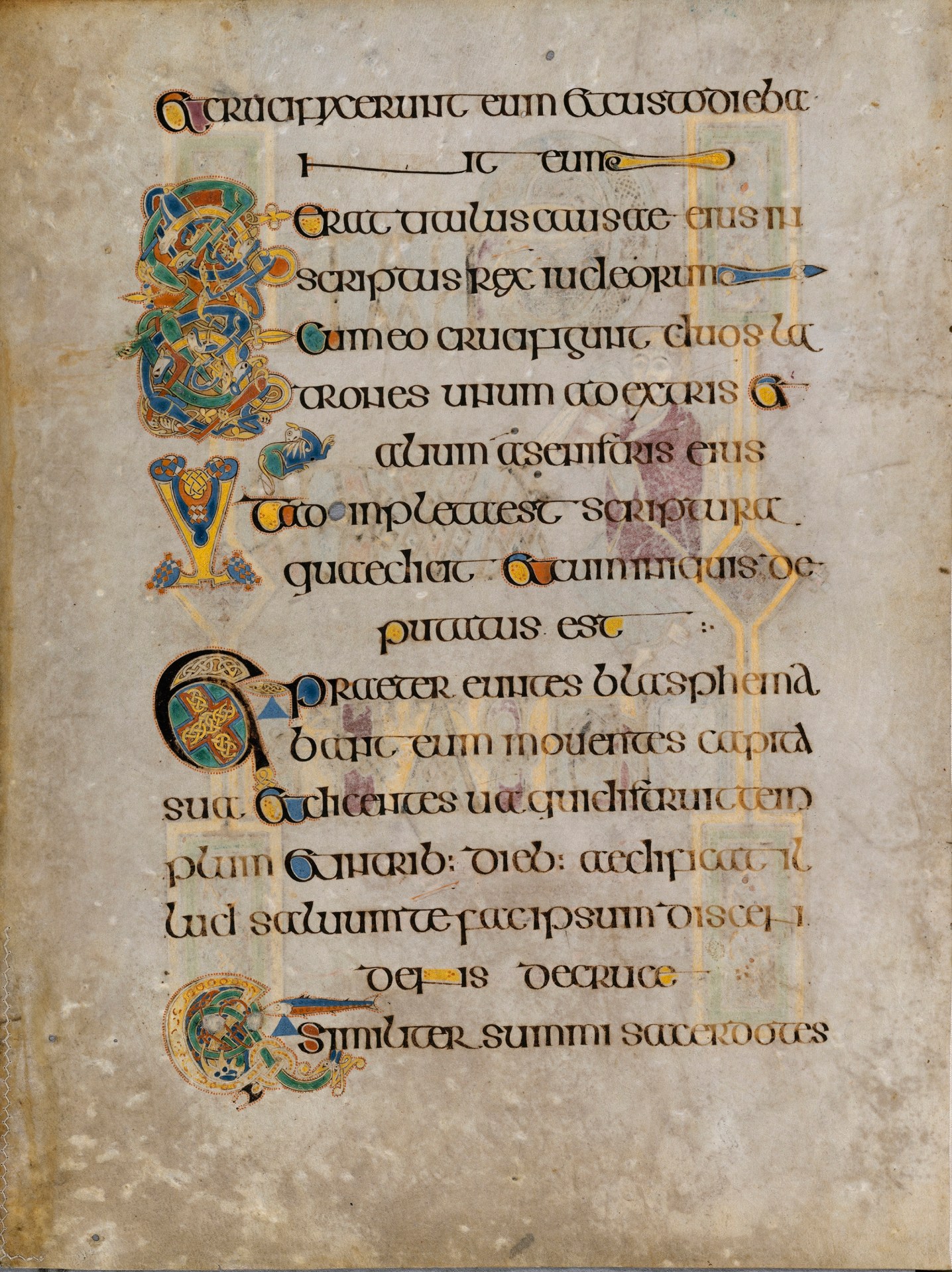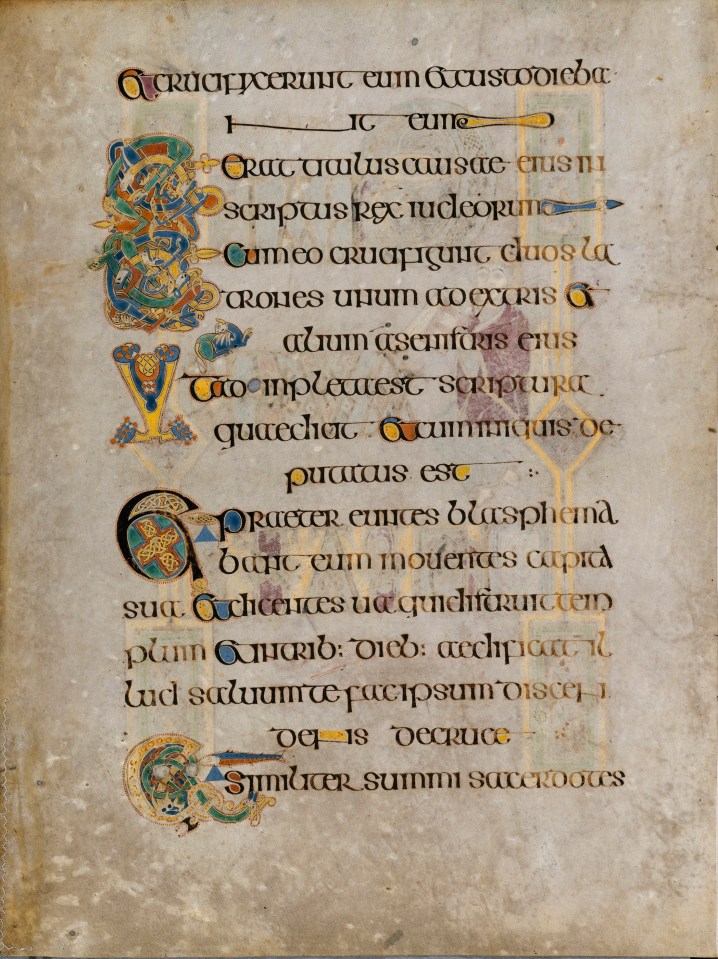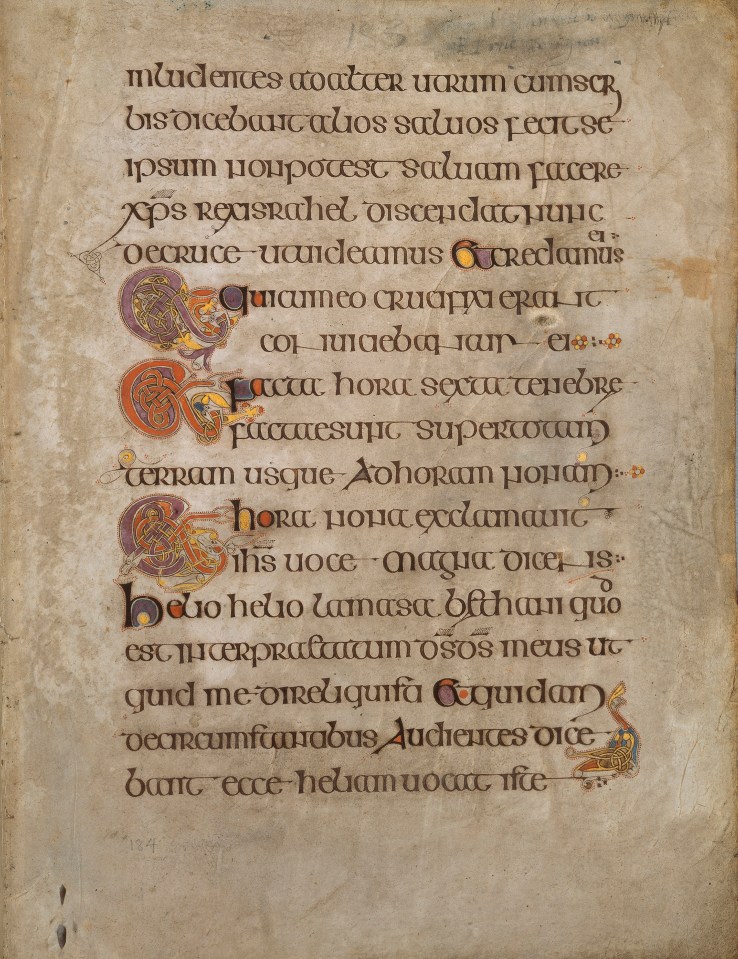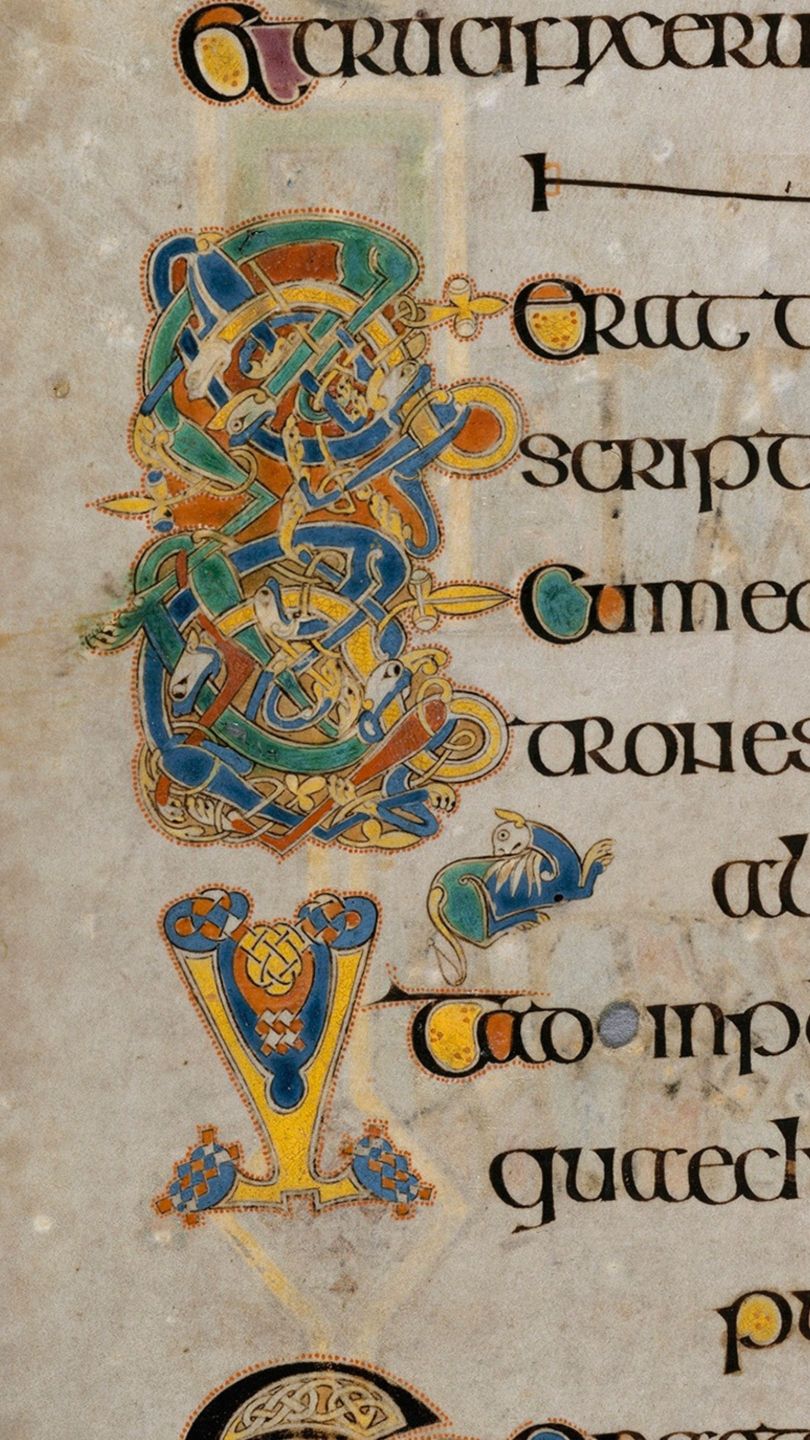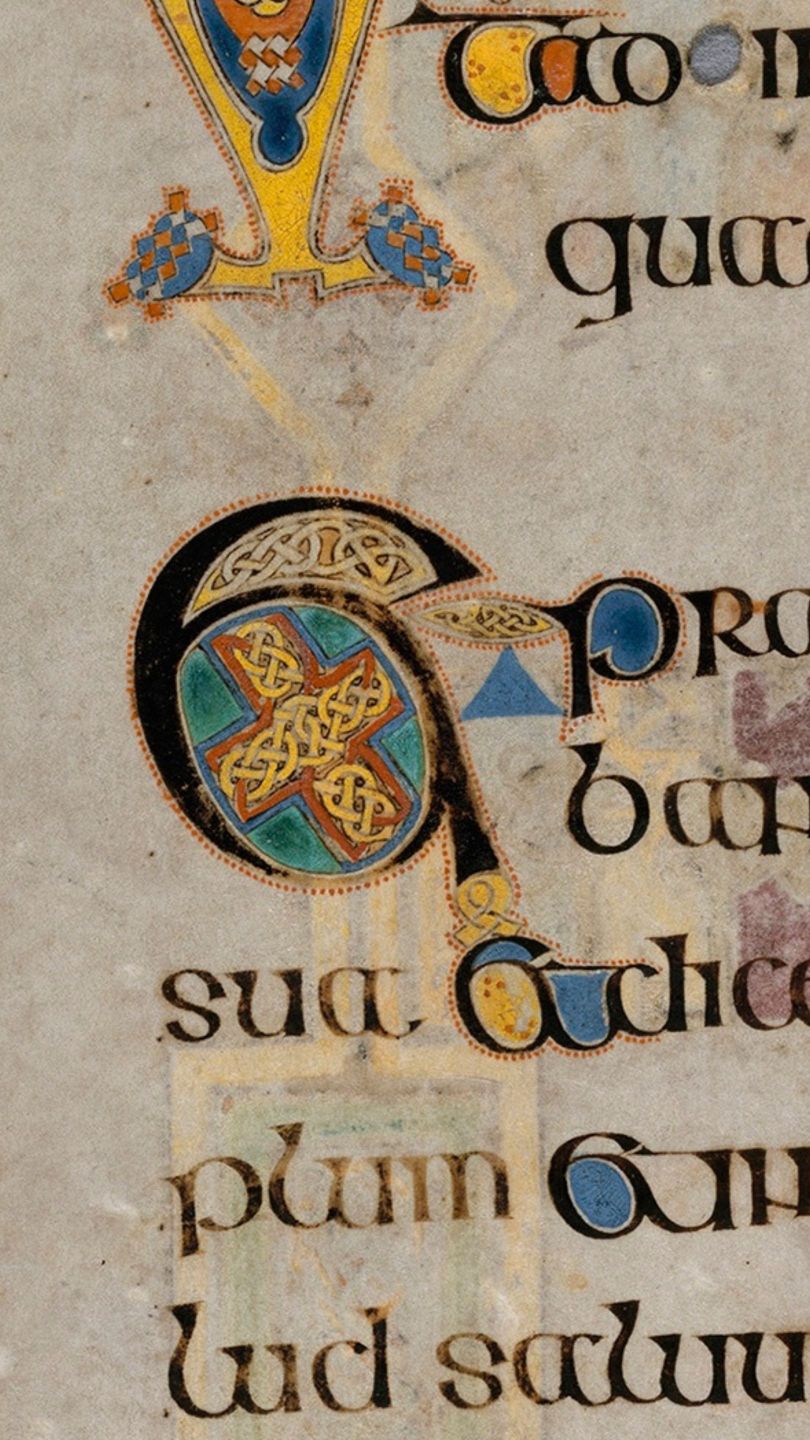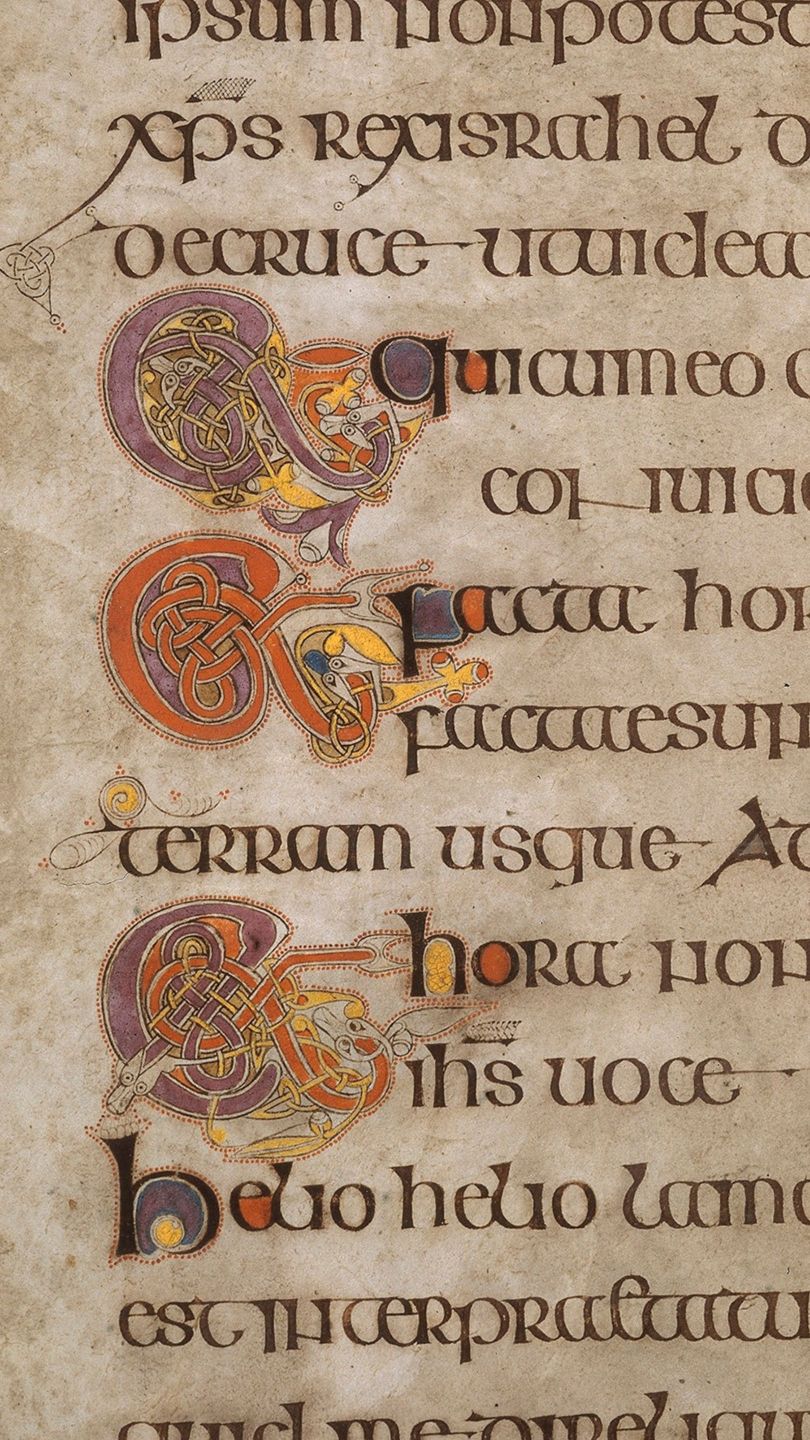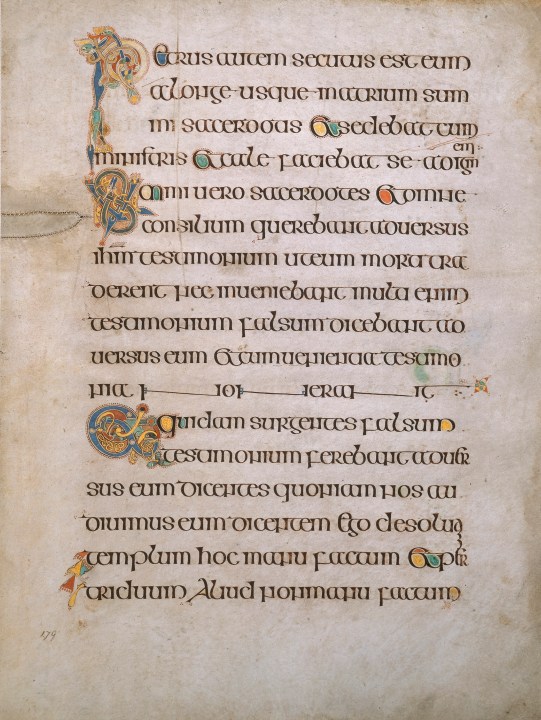
Mark’s gospel opens with the preaching of John the Baptist and the baptism of Christ. We are presented with a description of the Crucifixion while the final pages describe Christ’s Ressurection and Ascension.
The decorative scheme is rich with animal imagery, used throughout the Book of Kells as symbols of Christ to assert his divinity: lions, fish, snakes and peacocks. Lions, for example, sometimes appear in the Book of Kells exhaling a colourful breath. This is connected to the medieval belief that lion cubs are born dead and that following birth, the male lion returns after three days to breathe upon the cub to bring them to life. There are parallels here between the lion cub and Jesus Christ, who is thought to been resurrected three days after his death. Similarly, snakes within the book also have a double meaning. The creatures are usually thought of as representing evil in the world – as in the Garden of Eden – and are synonymous with the devil. However, an alternative meaning can be gleaned from the book’s serpents also, as they shed their skins and renew themselves, which could again represent the resurrection of Christ. Peacocks, too, carry a Christian message within the Book of Kells. The beautiful birds are integral to the decoration of most of the major pages in the manuscript. They appear at the end of text lines and in prime positions next to images of Christ. They are thought to represent Christ’s incorruptibility or immortality, due to the ancient belief that peacock flesh does not decay.
